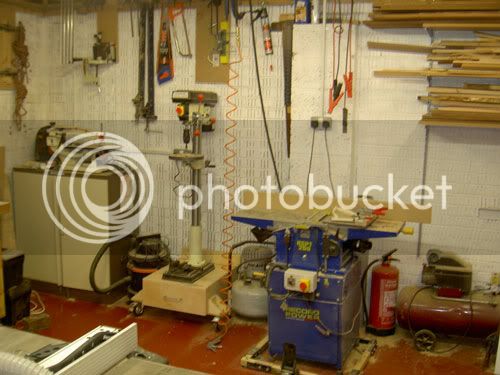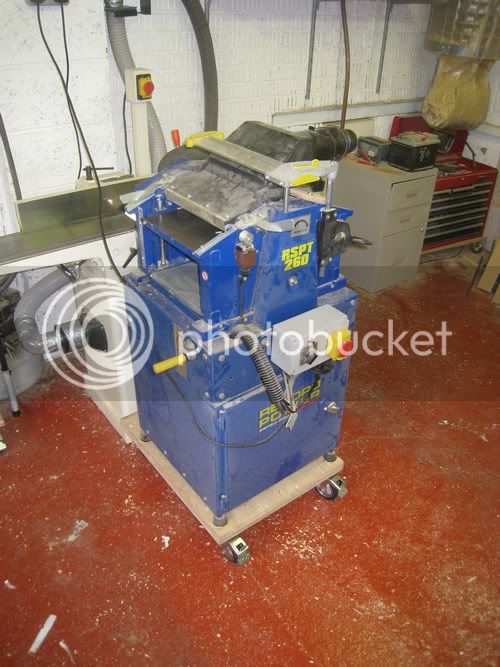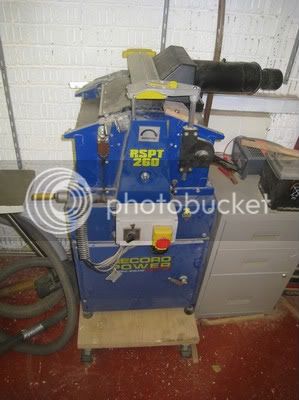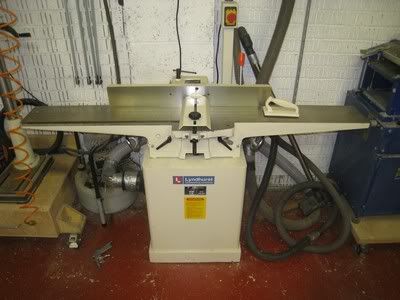p111dom
Established Member
Sound like he's just a salesman. Would you expect a car salesman to be able to know how the engines work? You've learnt another lesson then. Don't believe eveything you here. Check it for yourself.

OPJ":u9bw9ptv said:...This is the machine that I own ... The downside to this kind of machine is that you have to change between planing and thicknessing modes.




RogerS":1858hjsn said:I really don't think that planing/thicknessing sawn timber is the way to go for the reasons already stated. Still...it's your time and money. :wink:
p111dom":1zpszhaf said:I thought it best just to check and it's definately just a thicknesser. Ring the guy back and tell him he's an silly person. I typed the code into google and I found it at Tooltray.com listed as only a thicknesser.
p111dom":20e79wxv said:RogerS":20e79wxv said:I really don't think that planing/thicknessing sawn timber is the way to go for the reasons already stated. Still...it's your time and money. :wink:
Can't think why Rodger. My supplier sells both and they are the same boards. While in storage the planed board have tended to warp slightly so I still need to machine them in the same way to get them back to square and smooth so I may as well save the money and do it all from the off.
The only exception would be with purely American sourced timber which does tend to arrive planed already and has generally nicer and more uniform grain. However there are a lot of people who prefer the look of the home grown stuff be it because of the look or just it's origin. To buy pre planed and then plane it. Where's the benefit? I suppost you can see your finished grain pattern before you buy I like the mystery of rough sawn. It's all good fun.
1. What is the process followed, by using a planer and a thicknesser, to finish a piece of wood?
2. If I want to finish a piece of wood 150x300mm, do I need a 150mm planer or a 300mm planer to join a 150x300mm thicknesser?
3. Can I thickness with only a planer?
I think that makes sense. If I have this right, I use the planer to plane the bottom surface and left-hand surface, and I then use the thicknesser to plane the opposite surfaces.ike":1agtod2i said:It's most important to first obtain 2 adjacent sides perfectly straight and square. You have to do this on the planer table. This is why planers have longer tables than thicknessers - the longer the tables, the easier it is to plane a straight face. Plane one side of the timber (concave side down if it's bowed). Then plane the adjacent side square using the vertical fence. Then you can thickness to the final dimensions.1. What is the process followed, by using a planer and a thicknesser, to finish a piece of wood?
I understand this now, seeing how the process works... because I need to plane two faces that are at 90 degrees to each other, the planer has to be able to cope with the widest face.ike":1agtod2i said:You need 300mm wide planer capacity and 300mm wide x 150mm thicknesser capacity either as seperate machines or as a PT.2. If I want to finish a piece of wood 150x300mm, do I need a 150mm planer or a 300mm planer to join a 150x300mm thicknesser?
Okay... I understand the table saw approach. But is the result really all that bad compared to using a thicknesser? ...I guess it must be... I'm just thinking that it must be surely rather easy to get a certain thickness using the table saw, but I guess the quality of the finish is maybe not as good as from the thicknesser, is that why?ike":1agtod2i said:Sort of. If you plane a face and edge first. Then rip to slightly over the finished dimensions on the table saw to get the other faces parallel. You can then lightly plane to the finished dimensions. But inaccuracy can still creep in whereas with a thicknesser - it will always be exactly parallel faces. In fact this is how you would get the edges of a wide board parallel (you wouldn't try to run a board vertically through a thicknesser - it will quickly plane out of squareness).3. Can I thickness with only a planer?
I think that makes sense. If I have this right, I use the planer to plane the bottom surface and left-hand surface, and I then use the thicknesser to plane the opposite surfaces.
I understand this now, seeing how the process works... because I need to plane two faces that are at 90 degrees to each other, the planer has to be able to cope with the widest face.
However, can I assume that this also means the thicknesser planes on two faces - top and right - at once?
Okay... I understand the table saw approach. But is the result really all that bad compared to using a thicknesser? ...I guess it must be...
I'm just thinking that it must be surely rather easy to get a certain thickness using the table saw, but I guess the quality of the finish is maybe not as good as from the thicknesser, is that why?
At this stage I think I need to invest in the widest planer I can afford, and get a thicknesser to match whatever width the planer can handle.
Enter your email address to join: